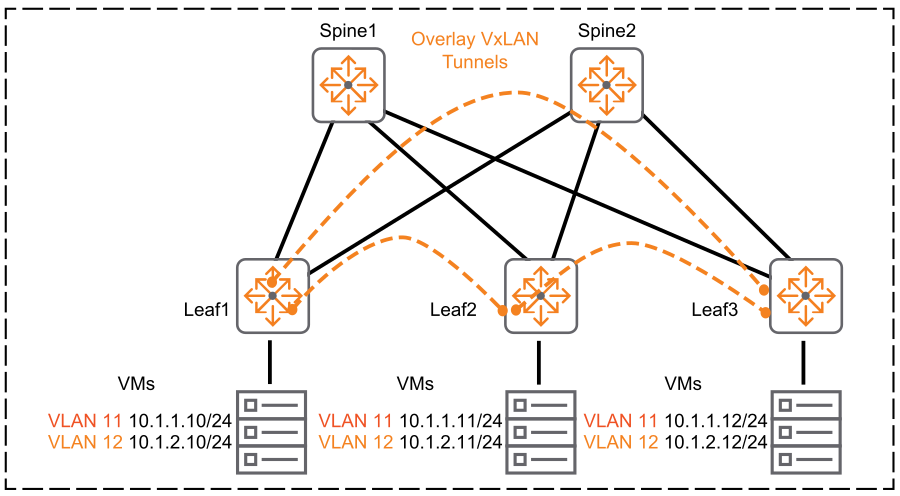Layered transport network

The EVPN transport network typically uses a layered structure. On the transport network, leaf nodes act as VTEPs to provide VXLAN services, and spine nodes perform forwarding for VXLAN traffic based on the outer IP header. If all VTEPs and transport network devices of an EVPN network belong to the same AS, the spine nodes can act as route reflectors (RRs) to reflect routes between the VTEPs. In this scenario, the spine nodes receive and advertise BGP EVPN routes, but do not perform VXLAN encapsulation and de-encapsulation. If eBGP is used, the spines will forward the routes from one leaf to the other.